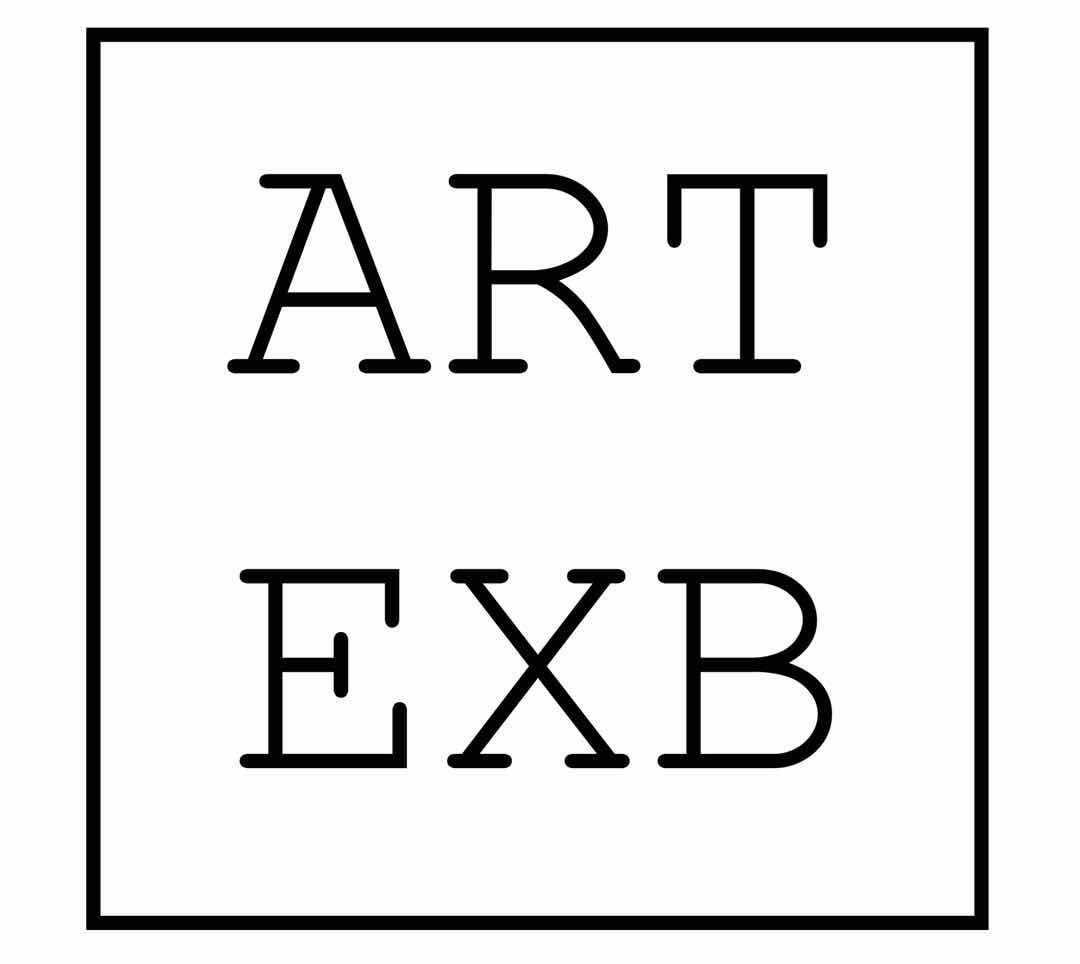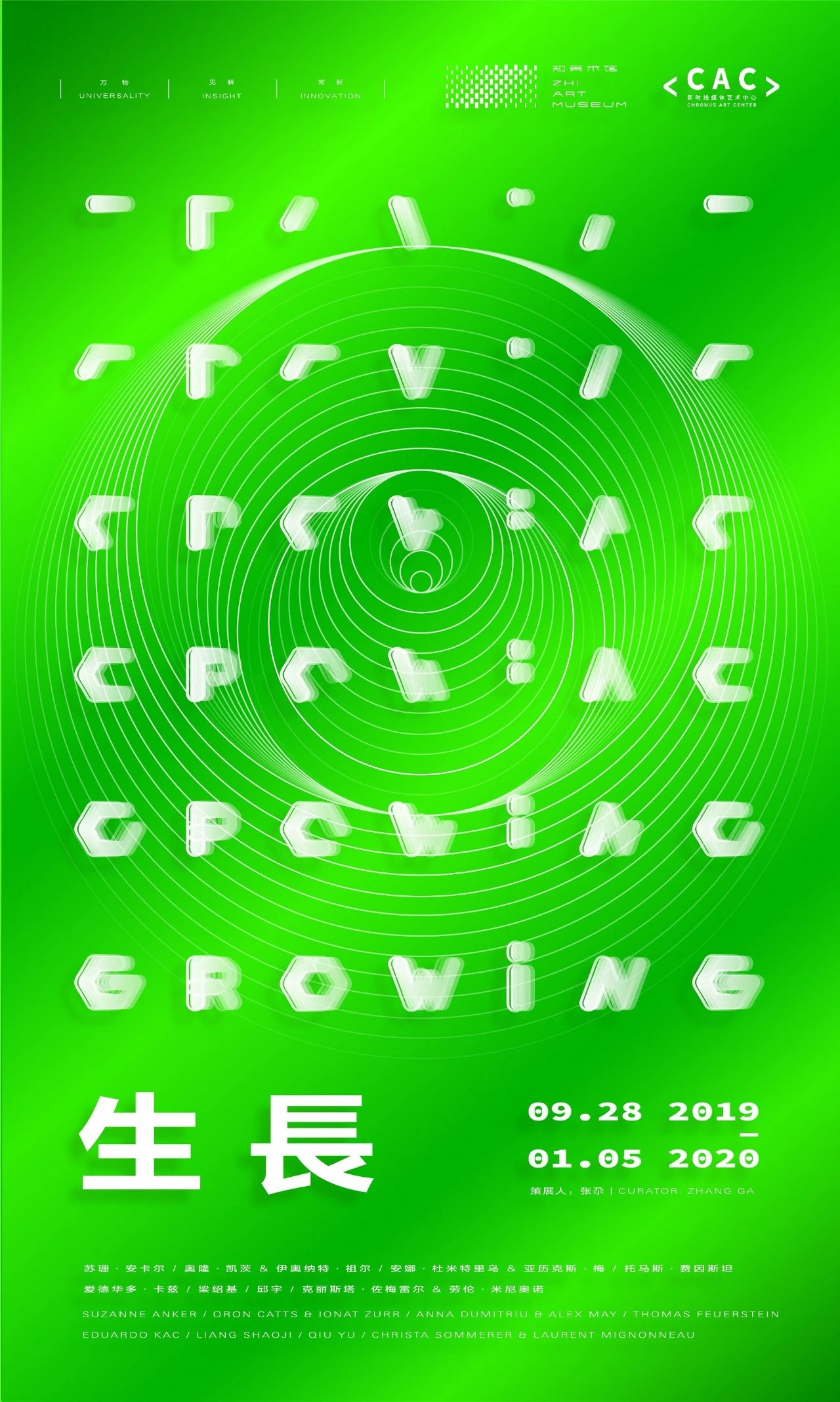知美术馆呈现的 “生长” 展示来自五个国家共八位艺术家/艺术家组合的作品,在技术幻想的滤镜下进一步剖析生命与生长之怪诞且躁动的界域以及活体与潜意识之间的边界,预示了一个既令人着迷又使人不安的未来。
苏珊·安卡尔(Suzanne Anker)2019年的作品 “粒子的来世” 汇集自然界的标本以及工业化的产物,使它们共居于由无数个培养皿构建的城市景观之中,一个由风干食物、中草药、西药、橡皮筋、彩色蜡笔、螺丝、金属回形针以及无数其它由生命体或永生物件编织的混合体,仿佛经由这一实验室的再设计可锻造出有机物与人造物共生的全新意义。
观众会发现一件展示着牵牛花开的摄影作品。这一看似平凡的图像描绘了将跨物种培育纳入艺术创作的首个果实:爱冬茄(Edunia)系艺术家爱德华多·卡兹(Eduardo Kac)与碧冬茄(Petunia)的复合体,其红色叶脉是艺术家DNA的生动表达。展览期间,种在一个花盆中的爱冬茄种子最终将会盛开出花朵,从而揭示出 “自然历史之迷” ——亦为艺术家此系列作品的标题。
名为 “护理与控制的容器” 的作品来自备受争议的SymbioticA艺术家二人组奥隆·凯茨与伊奥纳特·祖尔(Oron Catts & Ionat Zurr)。他们与德文·沃德(Devon Ward)合作,展示了一个细胞组织培养孵化器,它所需的二氧化碳或恒温条件由展览现场的可降解堆肥中腐烂的微生物所提供。艺术家又一次对技术工具论提出抗争,唤起对生物孵化器作为一具护理/培植并掌控生命的精巧仪器的同时是具备观念性与生命政治之仪器的激进解读。在知美术馆的展览中,新增的两件精致的小作品以其手术式的洁净与由宏大的发酵麦秸堆成的塔形雕塑形成对比。“(因为艺术就像一个生物体)……死亡总比逐渐逝去要好” 巴特勒式的标题透露出作品中所延续的永生活体细胞系所承载的转喻意义 —— 一种永远生存和永远死亡的僵尸状态,如同一个现代性的难题。在“生命机制”中,SymbioticA组合以一种原始细胞的形式唤起生命初现时涌现的诗意图像。它们是一团原始的生长冲动,虽经由生物工程设计,短暂且超然,逾越了实践的可能。作品以此暗喻了影响当代记忆的文化健忘症之批判方式。
梁绍基所呈现的一组作品勾勒并蕴含着他长久以来对蚕虫生命周期的着迷。作品运用了多种媒介:从蚕的生长和衰亡这一挣脱束缚的自然过程,到以电子形式增强的结茧和吐丝全过程(吐茧的电声强化),再到从经过基因改造的无脊椎动物(茧虫)身上放射出绿色荧光蛋白的光,最终到蚕开始吐出无尽而光滑的蚕丝,使得这个蚕的合奏达到展览的高潮。
虚拟物与物理实体在一个名为 “交互式植物生长” 的集群中找到了他们的戏剧舞台。克丽斯塔·佐梅雷尔(Christa Sommerer)与劳伦·米尼奥诺(Laurent Mignonneau)创造了一个直观的过程。其中,现实影响着虚拟,三维物由肉体触碰渲染而成,进化因此呈现出另一种形态的演进。
邱宇创造了 “增生”(Hyperplasia)模拟,将离散的元素引入一个共生整体。艺术家将从城市垃圾中寻觅而来的废物变为鲜活的生物系统。这是一个通过技术的干预使废物——并非恶性的肿瘤增生,而是对生活的增助中——重获活力。
与众不同,托马斯·费因斯坦(Thomas Feuerstein)从脑细胞和哲学中养殖肉类。通过希腊词源 “肉”(pancreas,现代英文意为“胰腺”)的双关含义,他的消化性器官(胰腺)/肉以黑格尔巨著《精神现象学》为 “养料“,以此生产肉体所需之食物。酶的分泌被赋予灵性,催化着生长、新陈代谢和一种新的生命,其弗兰肯斯坦式的戏剧性并不比真正可依赖的现实缺乏可信性。
温室效应和酸雨作为人类纪的效应占领地球母亲时会是什么样子?“古菌机器人:一个后奇点与后气候变化生命形式” 以幽默的方式想象出人类抵抗灾难性炎热环境效应(umwelt)的方式,并为此作出准备。安娜·杜米特里乌(Anna Dumitriu)与亚历克斯·梅(Alex May)将深海下的生长作为人类未来的实验台。
于其说展览 “生长” 是语言的指涉,它实则促使观众以内在的感受去体验一次与不同生命形式的相遇。这些生命形态或源于自然,或是人为的造化;亦或是来自共生的居所和基因间的交合。展览以此对亚里士多德式的生物分类法统提出质疑,进而向诸如动态平衡(homeostasis)、新陈代谢以及环境效应这些作为生命之基本显像等约定俗成的观念发难。展览不仅佐证了 “生长” 的能量作为一种自然的冲动,并阐明了 “生长” 这一行为作为技术力量将自然概念拓展为一种新的范式,在此之中,无自然的生态(ecology without nature)正在召唤着另一种现实的来临。
Growing, co-presented by ZHI ART MUSEUM and Chronus Art Center (CAC), is going to present eight artists / artist collectives from five countries, further dissects phenomenology of the living and the growing into the precarious zones of the uncanny, the borderline between the animate and the subliminal through the lens of the techno-fantastical, foreshadowing a future which is as fascinating as it is ominous.
Suzanne Anker’s 2019 work The Afterlife of Particles conjugates specimens from the natural world and items from the industrialized domain, in which an in vitro cityscape embraces a myriad of objects, orchestrating anassemblage of air-dried foods, traditional Chinese medicinal herbs, medical pills, rubber bands, pastel crayons, screws, metal clips and numerous other live or immobile objects encased in petri-dishes as if a laboratory re-engineering may forge a new meaning of symbiosis for the organic and the artifact.
Visitors discover a photographic work exhibiting a flowering petunia. Unassuming as it seems, the image depicts the first blossom of an inter-species artwork: Edunia, a hybrid of the artist Eduardo and the petunia plant, whose red veins are vivid expressions of the artist’s DNA. Over the course of the exhibition, a flower pot planted with the seeds of Edunia will eventually bloom to reveal the Natural History of the Enigma, also the title of this work series by the artist.
Titled Vessel of Care and Control, the controversial SymbioticA duo, Oron Catts and Ionat Zurr, in collaboration with Davon Ward stage a tissue culture incubator which is provisioned by CO2 or thermostatic conditions administered by a host of decayed organisms from biodegradable compost in situ. The artists once again stir up a contestation about the role of technical utility, insinuating a provocative perception of an incubator both as a contraption of care / nurtureand controlled life as well as a conceptual and biopolitical apparatus. For the ZHI ART MUSEUM iteration, two immaculately fabricated, minute works are supplemented to cast a surgically sanitary contrast with the monumentally heath-fermented pyramid. The Butlerian title (for art is like a living organism)… Better Dead Than Dying gives away the metonymy implicated in the living immortalized cell-lines which the work perpetuates – a zombie state of forever living and forever dying, as if a conundrum of modernity. In Mechanisms of Life, the SymbioticA collective invokes a poetic imagery of the emergence of life in the form of a protocell: a blob of the primordial impulse to grow, although bio-engineered, that is transient and aloof, beyond the grasp of actuality. The work thus insinuates a way of critiquing the cultural amnesia impinging on contemporary memory.
LIANG Shaoji presents a body of work that delineates and encapsulates his long fascination with the life cycle of silkworms. Employing various media from the unfettered natural process of the worm’s growth and withering, to an electronically augmented gamut of cocooning and producing silk, further radicalized by the genetically altered invertebrates emanating GFP luminosity, the ensemble reaches its climax when the silkworms begin to spit out seas of satiny threads during the cause of the exhibition.
The virtual and the physical find their theatrical staging in an assemblage literally called Interactive Plant Growing in which Christa Sommerer and Laurent Mignonneau create an intuitive process where the real affects the virtual, 3D rendered by corporal touch, evolution thus takes on another form of development.
QIU Yu creates a “Hyperplasia” simulationthat channels discrete elements into a symbiotic whole. The artist turned the objects scavenged from urban waste into a system of vivid living. An artificialbeing rejuvenated from the discarded and the derelict, not in a cancerous neoplasia, but a re-enforcement of livelihood, albeit through technical intervention.
Thomas Feuerstein grows, unlike any other, meat from brain cells and a large amount of philosophy. Punning on the Greek etymology of meat (pancreas), his digestive organ / meat feeds off of Phenomenology of Spirit, the Hegelian magnum opus in order to process food for body. The spiritually blessed enzymic secretion catalysts growth, metabolism and a new kind of life, its Frankenstein-esque dramaturgy is no less authentic than the real and the tenable.
What is it like when greenhouse effects and acid rain dominate Mother Earth as a consequence of the Anthropocene? ArchaeaBot: A Post Singularity and Post Climate Change Life-form does not smack the least humor in imagining and preparing us humans for a way of living to battle the catastrophically scorching umwelt. Anna Dumitriu and Alex May make growing under deep sea a testbed for future humanity.
Rather than a rhetoric signifier, the exhibition Growing compels visitors with an experiential and visceral encounter with life forms of natural origin and of artificial inception, or from symbiotic habitats and transgenic hybridity as sources of becoming, thus problematizing the orthodox of Aristotelian taxonomy, soliciting a prospect that complicates the conception of homeostasis, metabolism and the umwelt as fundamental manifestations of life. Growing not only attests to such energetics as the impulse of nature but also illuminates the act of growing as a technological force that extends the notion of nature to a new paradigm in which ecology without nature calls for another reality on the horizon.

